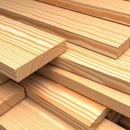Understanding the Lifecycle of Termites and Their Impact on Homes
Published in Home Articles
Termites may be small, but they can cause big problems for your home. To protect your property, it helps to understand the termite lifecycle. From eggs to adult workers, each stage plays a role in how these pests grow and spread.
In this blog post, we’ll explore how termites live, how they damage homes, and what you can do to stop them before it’s too late.
Stages of the Termite Lifecycle Explained
There are three main types of termites: subterranean, drywood, and dampwood. Each has a slightly different lifecycle, but all include the same basic stages. From eggs to main working groups, understanding these stages provides insight into their behavior.
The larval stage is when termites are most active. They eat wood and other materials, causing damage to homes. Recognizing these stages is essential for homeowners to take preventive measures.
How Termites Damage Homes
Termites can cause severe structural damage if left untreated. They eat through wood and can weaken the foundation of a home. Over time, this damage can lead to costly repairs and safety concerns.
In some cases, homeowners may not realize they have a problem until significant damage has occurred. Understanding the different types of termite damage can help identify issues early on. Early detection is key to minimizing repair costs.
Signs of Termite Activity
There are a few common signs of termite activity. You might see discarded wings near windows or doors. Mud tubes on walls or wooden beams are another clue.
Hollow-sounding wood or small holes can also point to termites. Sometimes, you might hear quiet clicking inside your walls. These are signs that you should call a pest control expert.
Preventing Termite Infestation
Preventing termite infestation starts with a good inspection. Keep wood and moisture away from your home’s foundation. Fix any leaks and clean gutters often.
Store firewood away from the house. Seal cracks in your walls and floors. These small steps can make a big difference.
Natural Ways to Help Control Termites
Some plants, like mint and neem, may help keep termites away. You can also use orange oil or vinegar sprays on small areas. These may not stop a full infestation, but they can help.
Using sand or gravel around your home’s base makes it harder for termites to dig in. Sunlight and airflow also help dry out wood and make it less inviting. Natural steps work best with regular care.
When to Call a Professional
If you see signs or suspect termites, call a pest control expert right away. They can confirm if there is a termite infestation and begin treatment. Waiting can lead to more damage.
For trusted help in South Florida, check out this pest control near Fort Lauderdale. Professionals have the right tools to handle the problem. They can also help you keep termites from coming back.
Understanding the Termite Lifecycle Can Save Your Home
Understanding the termite lifecycle helps you know when and how termites cause damage. Each stage of their life plays a role in growing the colony. If you wait too long, they can destroy wood and weaken your home.
Look for signs early and take action fast. Keep your home dry and well-maintained. Call a professional if you suspect a problem. Knowing the termite lifecycle gives you a better chance to stop them before it’s too late.
Did you find this article helpful? Visit more of our blogs.





























Comments